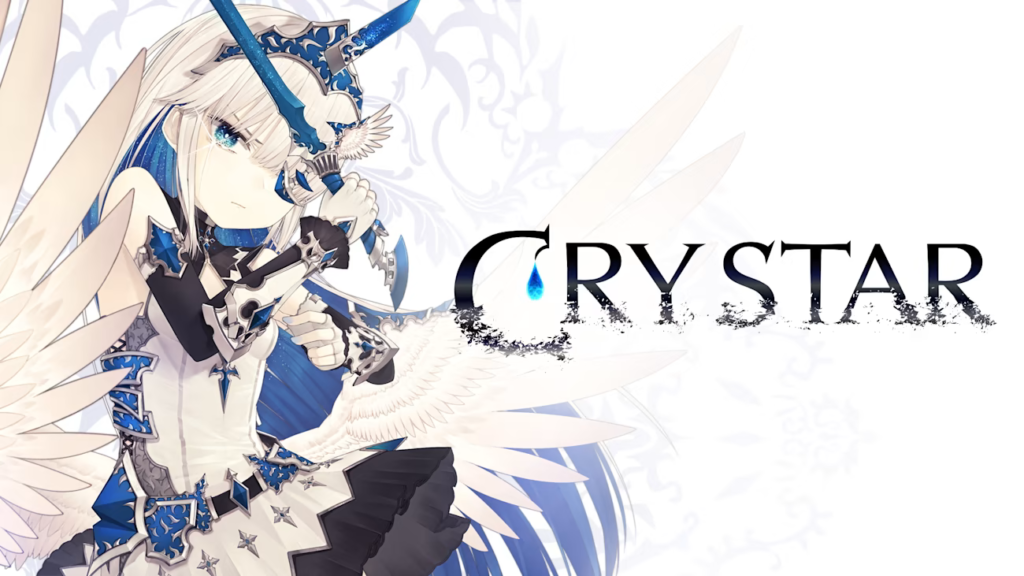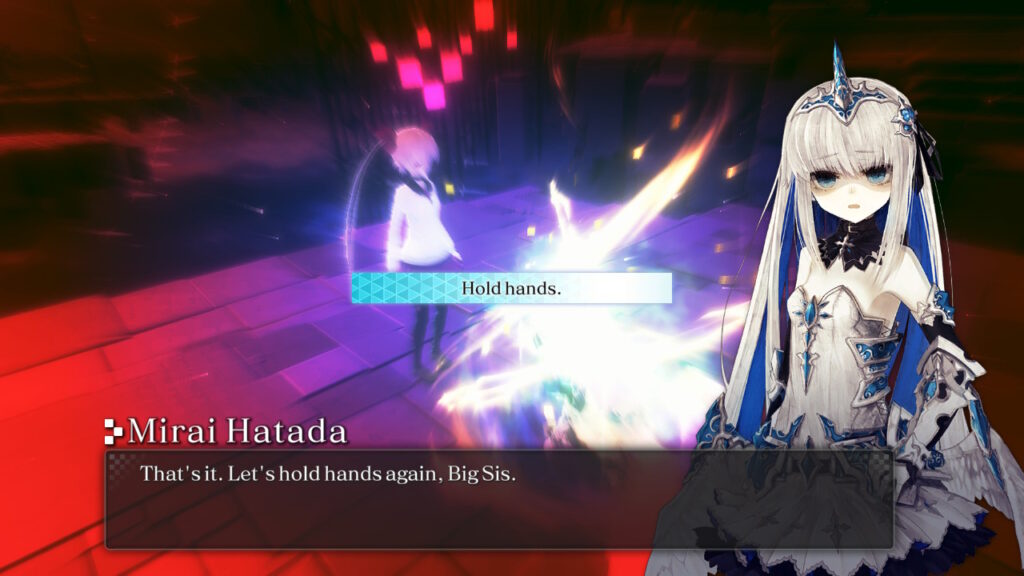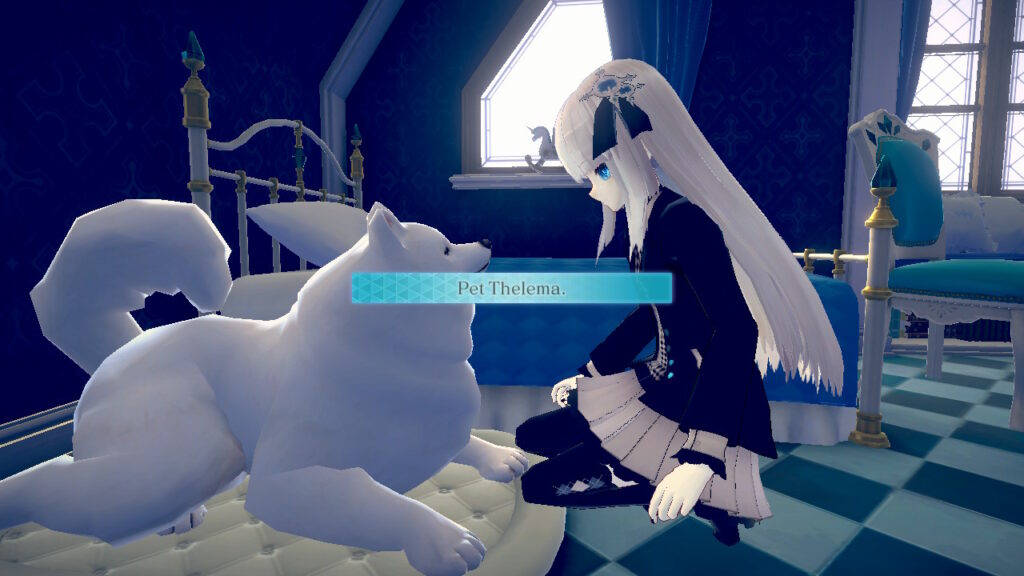
There’s nothing like some teenage angst to really sell some goth outfits. No, this isn’t an article on fashion trends at Hot Topic. It’s a review of Crystar, which has just been released on the Switch by NIS America. Crystar is developed by FuRyu, makers of the recent Monark (review here). FuRyu tends to produce a lot of middle of the road JRPGs and JRPG cross-genre games and Crystar is no exception. A few have been quite good, like The Alliance Alive but for the most part, everything from FuRyu seems to be an almost but not quite sort of game, the kind of game you pop in when you’ve run out of other titles.

Crystar is definitely one of those titles. You play Rei Hatada, a teenage girl who is sucked into Purgatory by a revenant (a sort of conscious ghost) with her sister. There’s no real reason for this and the entire beginning of the game is wildly confusing, ending up with Rei’s sister Mirai dying at Rei’s hand (gasp). The writing is inconsistent at best and utterly confusing at worst but for some reason, Rei is able to power up with her tears of sorrow and collect Ideas, the crystallized conscious thoughts of revenants which have some sort of power in Purgatory, though this isn’t the kind of Purgatory that Dante Alighieri wrote about. Clear as mud, right?

Anyway, Rei signs a contract with some demons to become an Executor, hunting Revenants and collecting Ideas for them in order to trade for her sister’s life before her sister passes on into reincarnation. As stories go, it’s a hot mess. If the above description sounds unintelligible, that’s because it mostly is and even having played through and having an idea what the heck is going on, it’s weirdly hard to explain. Maybe it’s the translation from Japanese or maybe it’s just not that great of a game but if you’re here for a deep and powerful story, you’re in the wrong place. If you’re here for some unfocused angst and guilt, weird costumes, and some hack and slash combat, well, maybe you’ll have fun.

Gameplay consists of two main parts in Crystar. The first and largest part is in the dungeons of Purgatory, where you run through a confusing warren of floating landscapes that look like MC Escher discovered hot pink and neon and forgot that he was making patterns. They’re weird, unique, and utterly repetitive as you blow through level after level which all look nearly identical. Each one consists of a series of staircases and pathways populated by a variety of specters and the occasional revenant which all attack you. You have two main attacks, heavy and light and after a while, you can access your Guardian, triggered by tears that you build up through combat because you’re a snivelling wretch apparently.

Combat is awkward and slow, with your attacks limited mostly to your two main attacks and bound special attacks which you earn by leveling up and crying in your room after each combat segment. Rei controls jerkily, floats in the air with repeated button presses, and the camera is not particularly intuitive. Fighting is as much of a tedious struggle as it is interactive and it’s a definite downer. Revenants are notably more challenging than their specter counterparts, though they look nearly identical. The character designs for enemies definitely don’t match up to the creative backdrops and character costumes in the game and even after a few levels, enemies start to feel unpleasantly repetitive.

Speaking of repetition, hopefully, you have some patience because Crystar is going to test it. There are eight main chapters in the game, but once you finish, it definitely isn’t over. Instead, you start over, repeating chapters multiple times and ending up completing a whopping seventeen chapters with each repetition bringing variations in dialogue and advancing the story. It’s clear that FuRyu thought they were being clever here but unfortunately, the entire affair comes across as tedious and ends up becoming a game that rather overstays its welcome. If there was a gripping plot that had this Groundhog Day vibe to it as part of an interesting twist, sure, but by the time you get to Chapter 8, chances are pretty good that you’re nearly done with the plot to begin with. Rei is surprisingly hard to identify with and comes off as particularly whiny. Mirai is barely a character for the longest time and there’s no real feeling of a bond before she’s killed. And the supporting cast is deeply uninteresting as well, making this a slog of combat and grinding for no real purpose.

Remember those special attacks? Well, you get them and some other stuff in the other part of the game, Rei’s bedroom. Every time you finish a stage you’re magically whisked back to the real world, though demons can call you on your cell phone and pester the crap out of you. It’s actually kind of irritating and let’s not even mention what Rei’s bedpost unintentionally looks like, but each time you wake up you can use the menu-driven interface in the bedroom to do stuff like play music, change outfits (if you have them), pet your dog to stabilize your emotions (Really? Dog petting? Sure it’s cute but…blah), and have a good long cry.

This crying mechanic is called Catharsis and there are several aspects to it, allowing you to generate new special abilities that can be equipped. You create and ‘Purify’ Torments manifested from slaying revenants. Since they used to be people, Rei is all sappy about slaughtering their afterlives and she turns that into raw power like a grinder in order to progress and save her sister. For someone that feels truly awful, Rei is certainly doing an awful lot of stuff in order to save her dead sis…definitely a bit too much teenage angst here. Those Torments can be Purified into Sentiments which you equip for combat abilities. They can also be fused by the use of Harmonia in order to make them more powerful. And yes, there is this much jargon. Crystar is absolutely chock full of nonsensical jargon, so much so that it’s hard to follow and it all gets thrown at you at once. By the time you get a grasp on it, telling anyone about the game might as well be speaking a foreign language.

Anyway, pet your job, cry some power, chitter about the plot, go back to fighting again, rinse and repeat until the level loop kicks in and irritates you intensely. But for all that this is a rough and unpolished game, the visuals are quite good overall. The character designs are wildly over the top of course, but they’re also cool and unique and the level backgrounds are detailed and interesting, even if there isn’t nearly enough variety most of the time. FuRyu is great at aesthetics, even if they crib more than a bit too much from the Shin Megami Tensei series and the art style of Kazuma Kaneko. The music is above average too, and some of the tracks end up being decent on their own, separated from the tedium that represents most of the game. In fact, sitting and listening to music with the clever camera shots in the music player is actually one of the more fun and interesting parts of Crystar. It should also be noted that the optimization for Switch is absolutely excellent here and in addition to the solid designs, the load times are remarkably short and the game looks quite good on the Switch, a rarity for a port these days.

Sadly, Crystar is not more than the sum of its parts, however. There are plenty of great ideas here and they’ve been crammed into the game so oddly that nothing really fits together. It’s almost like taking the best parts of three different puzzles (anime, JRPG, and 3rd person action) and trying to fit them together. None of it really works even though you want it to and it’s almost enough to cry over (it had to be done). There are some decent moments in the plot here and there, and some of the backstory is moderately compelling, but overall, Crystar is rather less than memorable and in a market absolutely flooded by high-quality JRPG content and action games, that just isn’t enough to justify picking up this at best average title, especially since it weighs in at $50 on the Switch. At least the visuals are pretty and the music is solid. Other than that, it’s all dependent on your tastes. Everything resonates with someone, right?

This review is based on a digital copy of Crystar provided by the publisher. It was played on a Nintendo Switch in both docked and undocked modes and played equally well in both. Crystar is also available on the PS4 and for PC on Steam.



